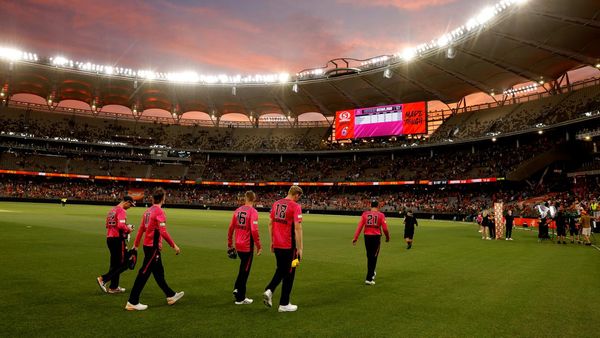The arrival of COVID-19 and the societal disruptions that accompanied it understandably drove a lot of Americans to drink. But even as life has returned to more or less normal this year, the drinking binge has continued — which isn’t great news for anybody other than the makers and sellers of alcoholic beverages.
The consumer spending statistics compiled by the U.S. Bureau of Economic Analysis are the timeliest estimates of alcohol consumption available. They show November’s spending on alcoholic beverages, adjusted for inflation and seasonal spending patterns, to have been 3% higher than a year earlier and 15% higher than just before the pandemic. (1)
Does that really mean Americans are drinking 15% more? Well, maybe. Consumers have been moving for years toward higher-quality, more expensive beer, wine and spirits, which implies that they may not have increased the quantity of their alcohol purchases by quite that much. On the other hand, restaurants’ and bars’ share of overall alcoholic beverage spending is still slightly lower than before the pandemic; given the big markups they charge on drinks, consumption could also be up by even more than spending. The annual consumption estimates published by the National Institute on Alcohol Abuse and Alcoholism are available only through 2020, and they show a 3% per-capita increase in alcohol consumption that year, even as real spending on alcoholic beverages declined 3% because so many bars and restaurants were closed.
These statistics also show alcohol consumption in 2020 to have been the highest since 1990. Drinking declined sharply in the 1980s and 1990s, with hard liquor falling out of favor and beer consumption beginning a slower decline. The beer decline continues, but distilled spirits have made a big comeback.
This comeback was in part a revival of cocktail culture and craft distilling, which is hard not to view in a somewhat positive light. There are four times as many distilleries in the U.S. as there were in 2001, according to the Bureau of Labor Statistics, and almost four times as many people working at them. High-end drinks that people generally don’t drink in huge quantities have led the way — from 2016 to 2021, the volume of super-premium spirits sold in the U.S. rose 77% while that of value brands rose 23%, reports the Distilled Spirits Council of the United States.
But there is clear evidence that more people are drinking too much. Deaths from alcohol-induced causes rose from 39,043 in 2019 to 54,258 in 2021, according to the Centers for Disease Control and Prevention, and the population-adjusted death rate is now more than double what it was in the 2000s.
The rise in drug-induced deaths has been much, much worse — going from 6.9 per 100,000 population in 1999, less than the alcohol-induced rate, to 33.8 in 2021. Provisional data also show an encouraging decline in alcohol-induced deaths in the first half of 2022, although that trend could change as final numbers become available. Even after the big increases of the past couple of years, U.S. alcohol consumption likely still lags that of many affluent countries, especially in Europe (the most up-to-date international numbers available are from 2019). And yes, Americans drank lots more back in the 1970s — not to mention the 1830s, when estimated per-capita consumption was nearly three times what it was in 2020.
Of all the things one can worry about, then, America’s current drinking binge maybe shouldn’t be at the very top of the list. But it deserves more attention than it has been getting. The alcohol-induced deaths statistics understate the true toll: The CDC estimates that the number of deaths from cancer, heart disease, homicide and other causes that are attributable to excessive alcohol use is several times higher than the official alcohol-induced number, and over-imbibing has plenty of costs short of death.
One study published in the American Journal of Preventive Medicine estimated the cost of excessive drinking in 2010 at $249 billion in lost productivity, additional health care and other charges, an amount equating to $2.05 per drink or $807 per person. In 2019 a quarter of U.S. adults surveyed reported that they had engaged in binge drinking (four or more drinks within two hours for a woman and five or more for a man) in the past month, a share that has surely risen since. The increase in drinking since then has been most pronounced among women and Black Americans, which may concentrate and intensify some of the ill effects.
This calls for a government-policy response, and there’s a pretty obvious one at hand. Not prohibition, but a reversal of the decades-long easing of alcohol taxation. Because federal excise taxes on alcohol are charged by the gallon, not as a percentage of price, and haven’t changed since 1991, they’ve fallen a lot in real terms. By modestly increasing alcohol excise taxes now and indexing them to inflation for the future, Congress could discourage over-consumption and reduce the federal deficit by an estimated $114.1 billion over the next decade.
On a personal level, our appropriate responses will surely vary. I participated (as a consumer) in that cocktail and craft distilling revival, drank too much in 2020 and early 2021, cut back sharply after that and then increased my intake again this holiday season. I’m not sure yet if it’s going to be a dry January or a demi-sec one, but change is coming.
____
(1) Because of the vagaries of the chain-weighted indexing methodology that the BEA uses in calculating real personal consumption expenditures, one technically shouldn't add real spending categories together as I've done in the chart and rate-of-change calculations. That is, if you added together real spending in all the different spending categories, the sum wouldn't equal total real consumer spending as estimated by the BEA, with the difference growing the farther you get from the indexing base year (in this case 2012). Because I'm adding together just a few related categories, and not getting more than a decade away from 2012, the distortion here should be small. But I figured I should attach a warning label.
____
ABOUT THE WRITER
Justin Fox is a Bloomberg Opinion columnist covering business. A former editorial director of Harvard Business Review, he has written for Time, Fortune and American Banker. He is author of “The Myth of the Rational Market.”
This column does not necessarily reflect the opinion of the editorial board or Bloomberg LP and its owners.







